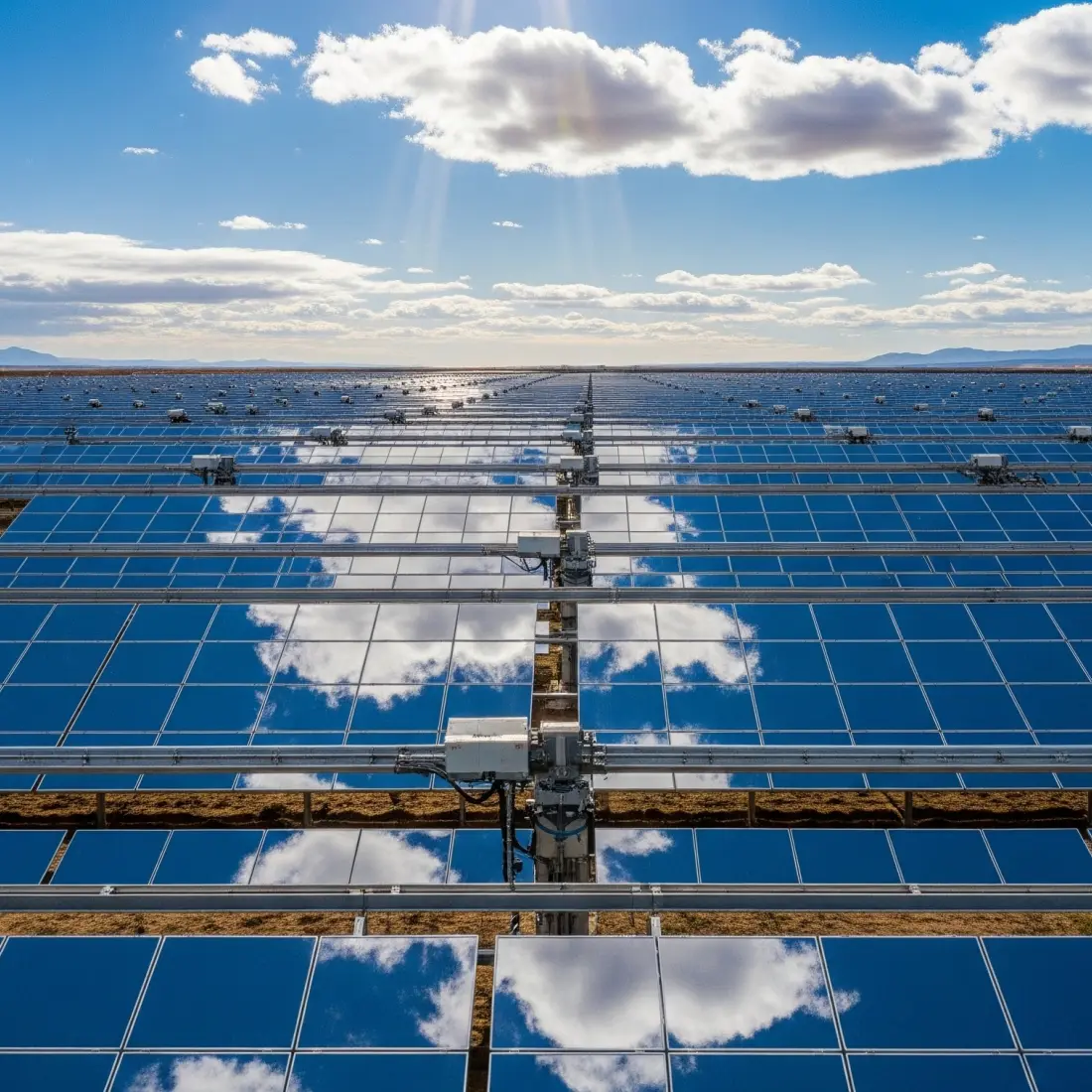Bifacial solar panels: The future of the solar industry?


Bifacial solar panels have been on a hype for a while in the PV industry. Let’s have a look at this technology and its positive and negative aspects.
What are bifacial solar panels?
Bifacial solar panels are the solar panels that can produce power from both of their sides. They use the same cells as their monofacial counterparts, but bifacial panels have a reflective back or dual panes of glass that hold the solar cells in place. Most such panels are made of monocrystalline cells because of their better efficiency, although polycrystalline variants exist too.
Bifacial solar panels have celled panels on both sides, therefore they can absorb the light that otherwise gets reflected off ground or other surfaces. Despite its efficiency, such technology is rarely used in residential installation and works best when employed on utility scale and commercial application because bifacial panels should be specifically elevated and angled, so that they could absorb the most light from the ground.
How does it work?
Bifacial solar modules use the same technology as conventional ones, just in a modified way. Solar cells on both sides of a panel absorb the sunlight coming from different directions — the front takes in the direct sun rays while the back absorbs the light reflected from a surface. Therefore, the photovoltaic effect takes place on both sides and, consequently, the modules generate more electricity. Unlike monofacial panels, that allow part of the sunlight to pass through, bifacial ones try to minimize these losses.
Bifacial solar modules have a slightly peculiar construction. They usually have metal connectors on both sides. Another notable feature is their slimness because they require limited framing and are usually housed in a thin and transparent layer. The mounting for bifacial panels is slightly different, too. To operate at full capacity, the panels must have the minimum shading on both surfaces, so their construction components should be smaller. Therefore, bifacial panels usually have narrower support rails, frequently constructed just at the corners of the racking system, and small junction boxes.
Bifacial modules can also come with trackers that enhance their performance even more. It is calculated that such modules can have 30-40 percent greater efficiency when combined with trackers.
Should you use them? Pros and cons
In theory, bifacial solar panels look like a great solution to minimize the energy waste and make the solar power plants more effective. But are they worth the hype? Let’s see a few pros and cons below.
Pros:
- Higher efficiency
Bifacial solar panels can generate electricity on both sides, so, obviously, they can produce more electricity. As a result, fewer panels can generate more electricity than monofacial modules. Some manufacturers claim the bifacial panels can produce 30 percent more electricity than the single-sided ones. Moreover, their efficiency can be even higher with the right tracking systems and ground type.
- Less space required
Due to the increased efficiency per unit, bifacial solar plants require less space. This technology is especially useful in the case of land limitations and the need to make the plant as efficiently as possible.
- Longer durability
Bifacial panels are more durable because they don’t require frames and are glass-covered on both sides. Manufacturers usually use tempered glass in their productions which is more resistant to high temperatures, UV and strong winds.
- More flexible angle maneuvering
Bifacial solar panels have more flexible maneuverability. You can tilt and track panels to have the maximum electricity generated on both sides. It is also more easy to come with the most optimum angles that allow solar panels to operate with best efficiency.
- Longer warranty
Manufacturers usually provide longer warranties for bifacial panels.
Cons:
- Higher price
Bifacial panels are made of monocrystalline cells which makes them more expensive. Their manufacturing process is also more costly and results in their higher market price.
- Higher installation costs
Bifacial panels require more complex installation procedures due to their weight and delicate mounting structures.
As you can see, bifacial panels’ main drawbacks are their costs. Therefore, this technology won’t make much sense to individual users, but it could increase the return of income in the long-term perspective in commercial or utility projects.
Market tendencies and future perspectives
In 2018 president Trump introduced additional tariffs for non-domestically produced solar panels. In 2022 the Biden administration decided to extend the tariffs for four years, but have made an exemption for bifacial solar panels. This means that bifacial modules can potentially become more popular in the near future.
Moreover, the cost of bifacial panels has decreased significantly over the last two decades. Naturally, their market share is also increasing. The examples of these trends can be such large scale bifacial installations as Robins Air Force Base 870 acre solar farm, the Taygete Energy Project in Texas with 340 MW solar power, and 224 MW capacity LONGi power generation project in Mitchell County, Georgia.
However, the bifacial technology won’t make a big impact on the residential solar market because of their pricing and inability to effectively operate on residential rooftops.